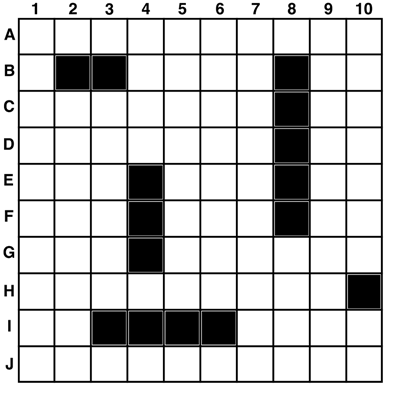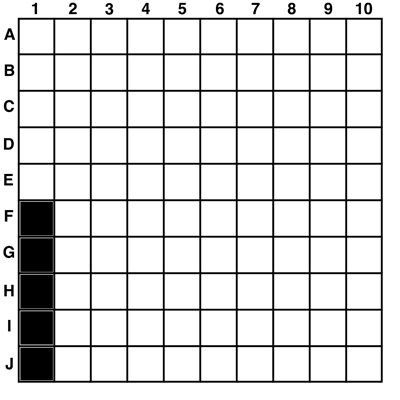

Over the next few weeks we settle into a simple routine. I bring in books to read—children’s books mostly, which are easy to read aloud and often wiser than their grown-up counterparts. Although Ashoka still can’t summon the details of his forgotten tryst, he stops worrying about it. From time to time we run through possibilities for The Date, but nothing stirs recollection.
—Could it be a job interview?
—If so, I might as well skip it. No one will hire an old bag of bones like me.
—Maybe it’s a literal date. Have you been romancing one of the residents here?
He snorts. —Not a chance. I’d remember that.
Julie finishes her quilt and dies in her sleep less than three days later. Her service draws a large crowd, family members some of whose names I recognize from her quilt. As Julie predicted, Bill shows no sign of giving in to his illness. Any concern about Ashoka appears unfounded—for “an old bag of bones,” he seems if anything livelier than when we met.
We keep a deck of cards in the nightstand drawer and pull it out for War, Gin Rummy, Double Solitaire, or other games. We also indulge in pen-and-paper pastimes, like Hangman and Battleship. We play the latter the way I learned as a child, which is more challenging than how I usually see it played now. The way I teach Ashoka is like this.
Each player controls a fleet of five ships. The ships are deployed to a section of ocean represented by a 10-by-10 grid. The fleet consists of a 5-square battleship, a 4-square cruiser, a 3-square destroyer, a 2-square submarine, and a 1-square PT boat. A typical placement might look something like the grid below:

Once both opponents place their ships, they take turns firing torpedoes in an effort to sink every ship of the enemy fleet. Each ship fires one torpedo per turn, and the player can choose any grid square to target. All targets are announced at the same time; for example, B-7, C-2, F-5, H-9, and J-3. The opponent then announces how many of those target squares were part of a ship: Two hits, say. It’s up to the player, turn after turn, to figure out which target squares contained ships.
When every square of a ship has been hit, the ship is sunk, and that fact is announced to the other player. By losing a ship, that player also loses one torpedo shot. The player whose ships are all sunk first loses.
Ashoka is a fast learner, but after one disastrous loss I am perplexed. I had fired torpedoes all over the grid but only hit one ship. When I ask to see his grid, Ashoka grins slyly and shows me the following diagram:

—That’s only the battleship! Where are the other four ships?
—They’re all there. I just stacked them on top of the battleship.
I am aghast. —You can’t do that. That’s cheating!
—I didn’t cheat. You never said anything in the rules about not stacking ships.
—I don’t have to say that, you know ships can’t be stacked on top of each other!
He pretends innocence. —Why not?
—Because… Well, just think about it. You can’t put one ship on top of another in real life.
—But this isn’t real life, is it? It’s just a game.
I should have an answer to that, but I am bereft of arguments. I do resolve to be more careful about explaining the rules of any future games.
And then one day when I arrive, he is not in the bed. Like Bill, he has traded horizontal confinement for a set of wheels.
—What do you think? he asks proudly as he grips the treads and propels himself forward.
I can hardly believe it. Lively is one thing, but what happened to the invalid? I look closer, trying to peer past lingering first impressions. Is his hair thicker, or just better groomed? Is his skin firmer, or just a trick of the light?
Conjecture and intuition cascade, collide, then settle and reshape my understanding. I see now. Of course.
Not that I can tell Ashoka, not yet.
—Come on, I temporize. —Let’s go for a spin.
Moving behind the wheelchair, I grasp the handles and push him out the door. The common room proves empty, but an inner courtyard entices us through a sliding glass door and into the late morning sunshine.
Ashoka closes his eyes and tilts his head back. I follow his lead, feeling the warmth as he does, as rediscovering an old friend rather than standing under familiar light.
Since nothing we could say would improve the moment, we are silent.
Life moves on regardless, though, and a squirrel skittering across the path breaks our reverie. I push the chair ahead as we take in the surroundings.
The atrium is large, with a fountain burbling happily at its heart. The path winds through scattered shrubs and trees on its way to the center, even an old willow that attests to some long-gone gardener’s care. As we approach the fountain, the walkway turns in a perimeter. Looking closer, I see that what first appear to be concentric paths are actually a single trail.
—A labyrinth! I exclaim.
Ashoka glances around in confusion. —Where? I don’t see anything.
I point to the path. —See how the bricks are arranged to form a trail? It winds around, doubling back on itself over and over again, until it finally reaches the fountain. Here, I’ll show you.
—Outside for five minutes, and you’re already getting us lost, he grumbles as I maneuver the chair along the walkway.
—No, you’re thinking of a maze. Mazes are designed to hide the finish and make you guess the correct path. A labyrinth is a single path that guides you inevitably to the finish.
—Why’s it keep going back and forth, then? Seems like a waste of time.
—It’s a passage. It gives you time to contemplate your destination, as well as your journey. A meditation incarnate.
Already I see the fountain as The Date. Each turn we traverse in this brick circuit becomes, in my mind, another waypost on that longer road. My uncertainty wanes as the itinerary begins to coalesce.
Ashoka has other ideas. —I’m bored, and all these twists and turns make my head hurt. You want to get to the fountain? Watch me.
With a few sharp spins of the wheels, he cuts directly across the shuttling path. I’m left staring as he catches his breath beside the cascade.
—See? Nothing to it.
—That’s not the point, I protest weakly. I almost accuse him of cheating again, but there’s something so human about Ashoka’s way. Where would we be without that inner daemon pushing us to look for shortcuts? We are such a paradox: we hate cheaters but love rulebreakers.
—You’re right, I admit. —That was faster.
—Darn right, he smiles victoriously.
My hand stirs the water as I consider how to bring up my revelation. I don’t expect him to be happy with my request, and I can’t imagine the outcome should he balk. As usual, there’s only one way to find out.
—Ashoka?
—Hm?
—I think I know what The Date is. Or at least I have a guess.
He cranes around eagerly.
—Well? What is it?
—I could be wrong. And even if I’m right, it wouldn’t make much sense. But I think that’s why I’m here, to help you get there. Can I ask you to trust me? I promise to do everything in my power to prepare you, and there’s plenty of time. Months, even.
—But what is it? Why can’t you just tell me?
—I think… it should be a surprise. Or if I’m wrong, I don’t want to build up expectations. Please. Can you trust me without having to know?
He’s frowning now. My stomach clenches, I’ve lost him.
—I’m cold. I want to go back.
I wheel him along the path, through the sliding door—away from the fountain, away from the labyrinth, going, going… gone.
I can’t bring myself to visit the following day. When I do return the day after, Ashoka’s room is empty. I find him at the fountain and sit on the edge.
—I did it your way this time, he says. —Took a lot longer to get here, to the center. Gave me plenty of time to think, though. I guess sometimes that’s more important.
He looks at me directly, searching my face for confirmation of his decision. —If I can’t trust you, who can I trust? he asks finally.
—Thank you, I manage.
He nods, and the courtyard is quiet again for a time.
When the shadows have shifted, he stretches and rubs his hands together. —So what’s your plan?
I consider his strength, and all there is to do. I hardly know where to begin, but one thing is clear.
—It’s a big world out there. I think it’s time we left this place.

Leave a Reply
You must be logged in to post a comment.